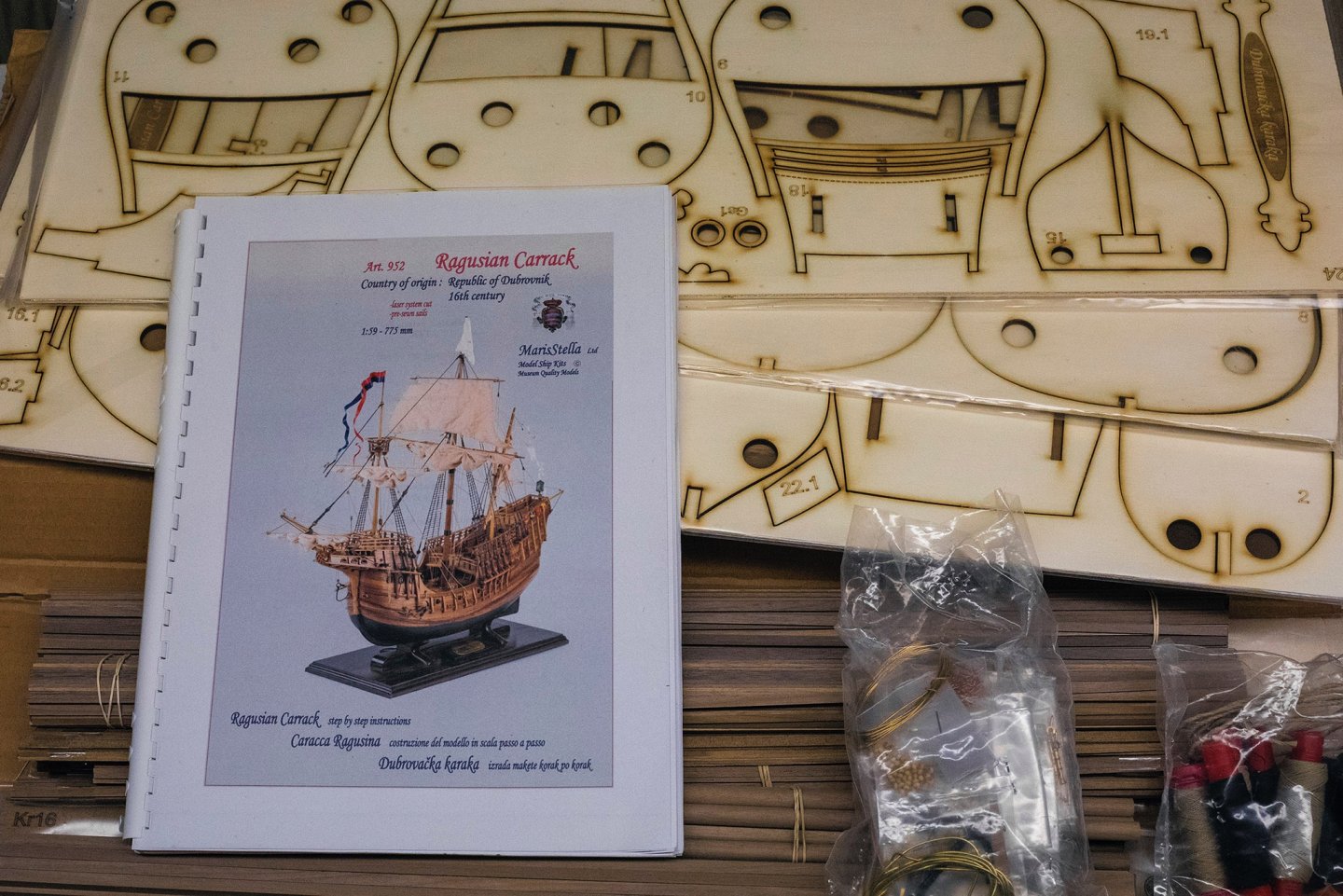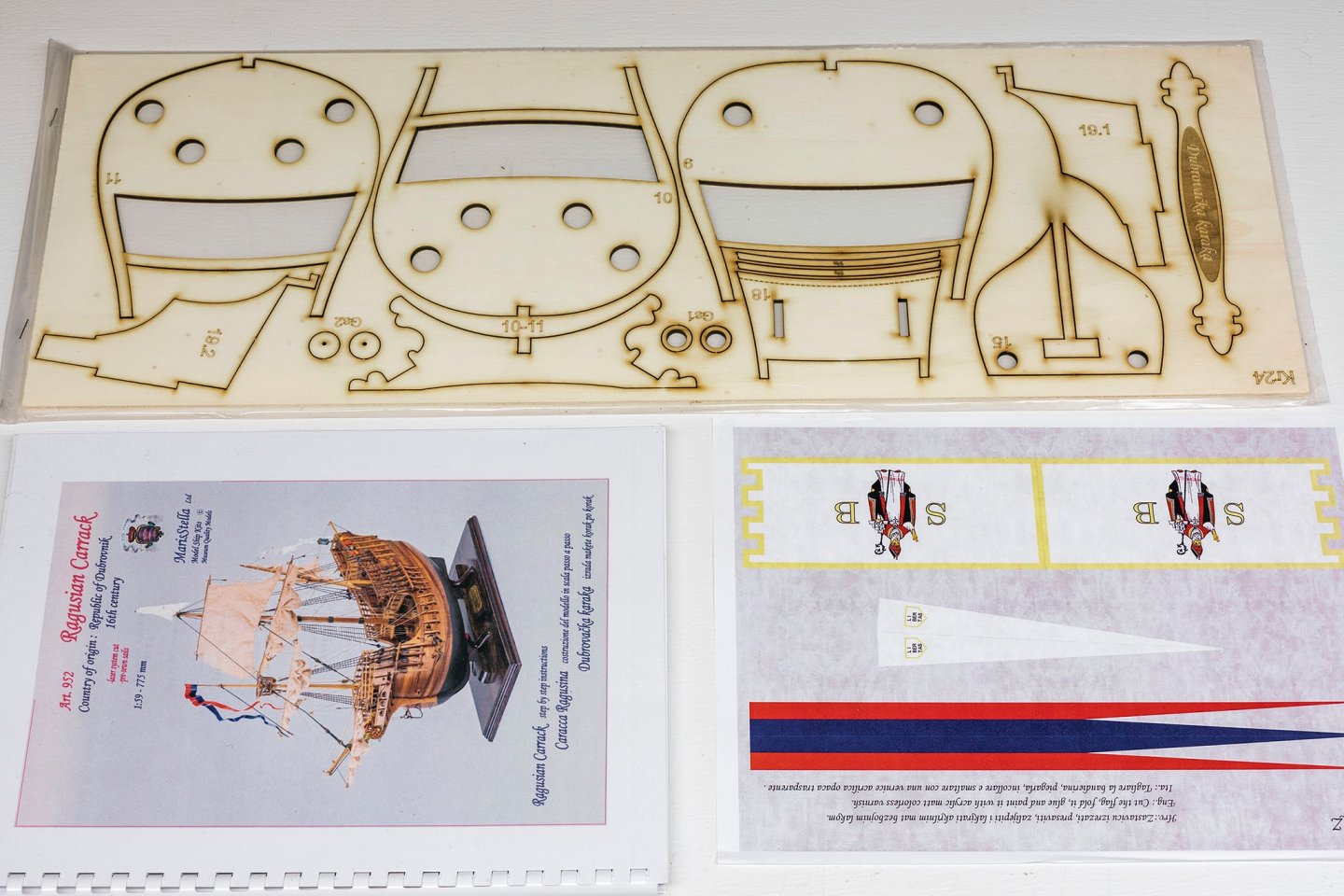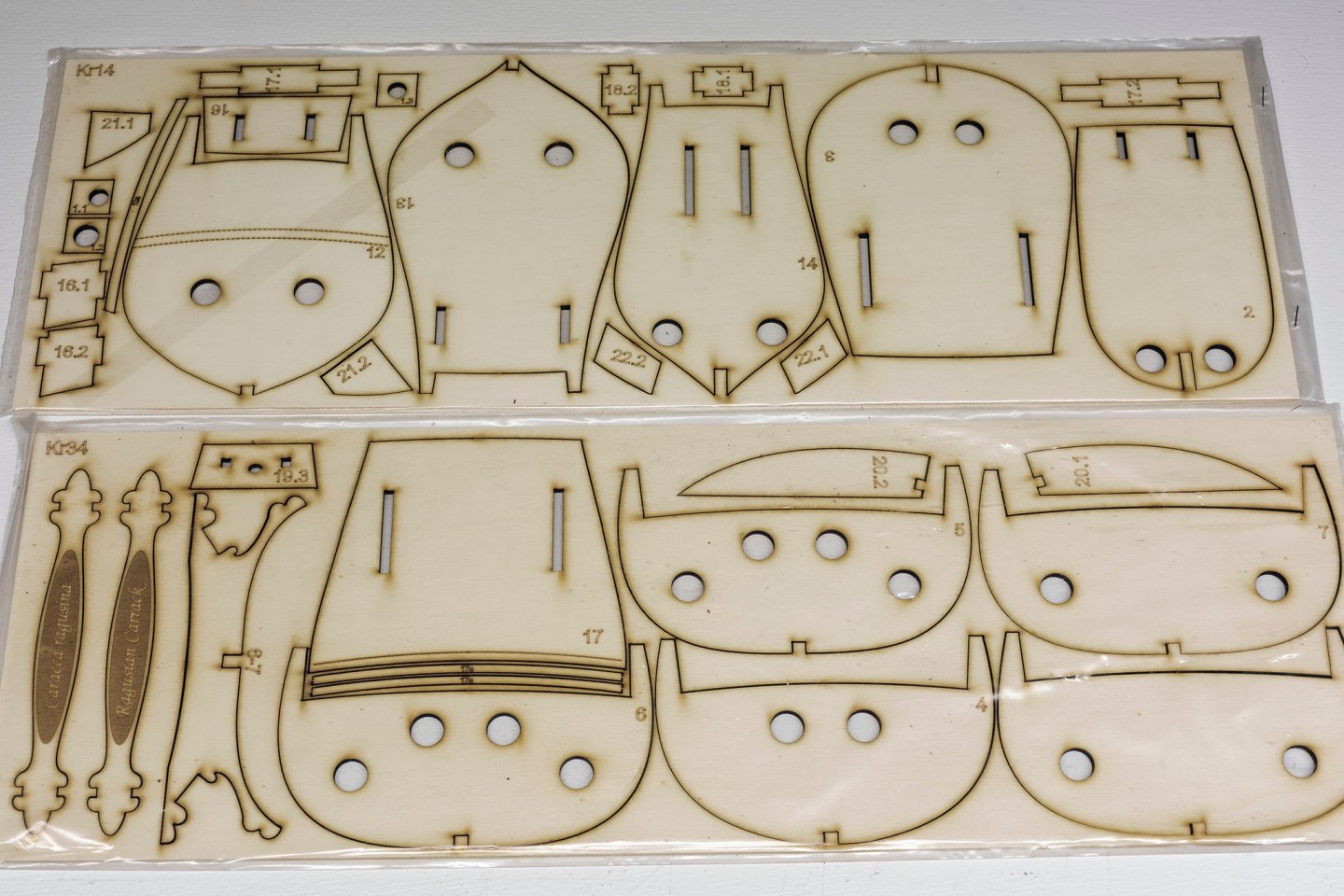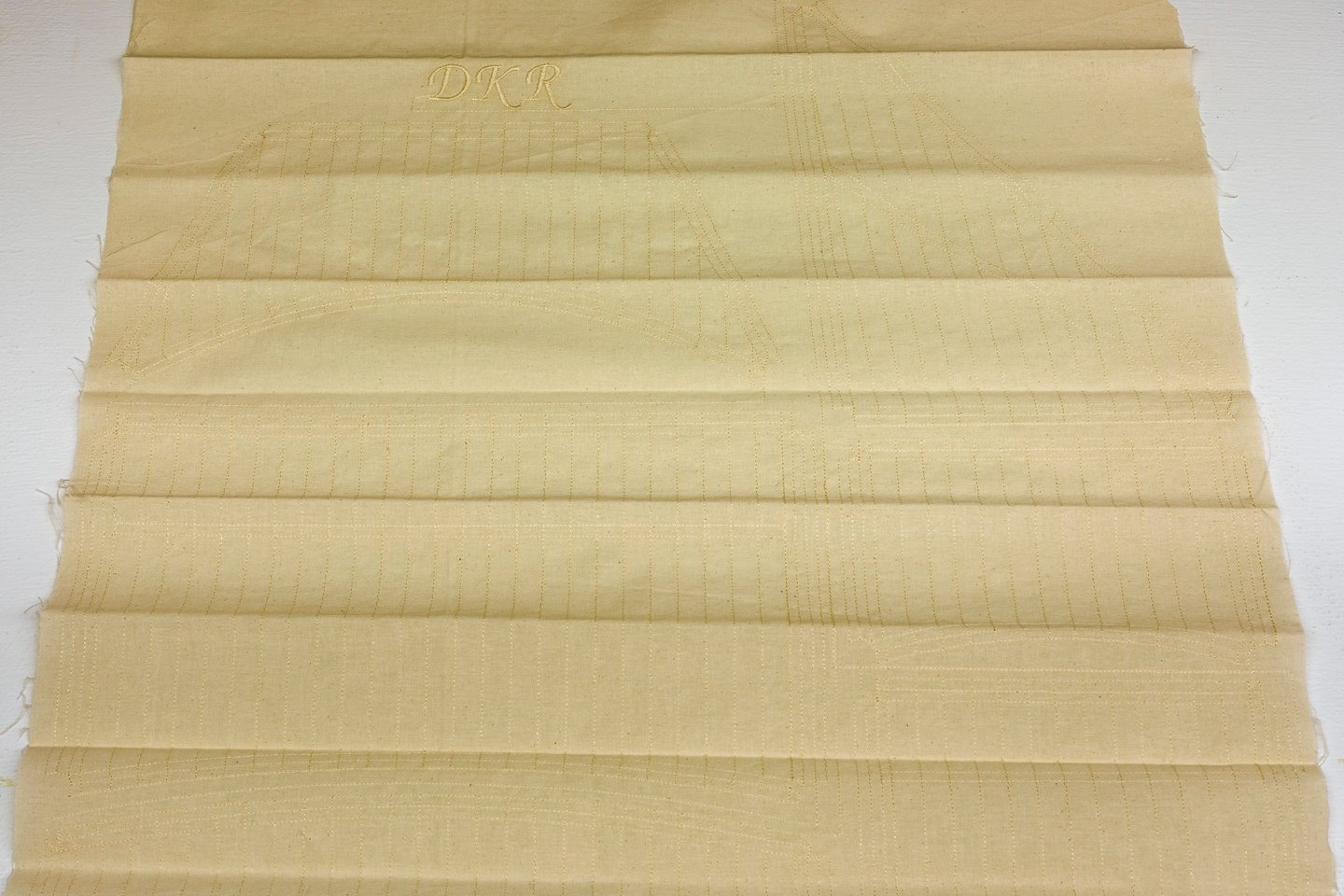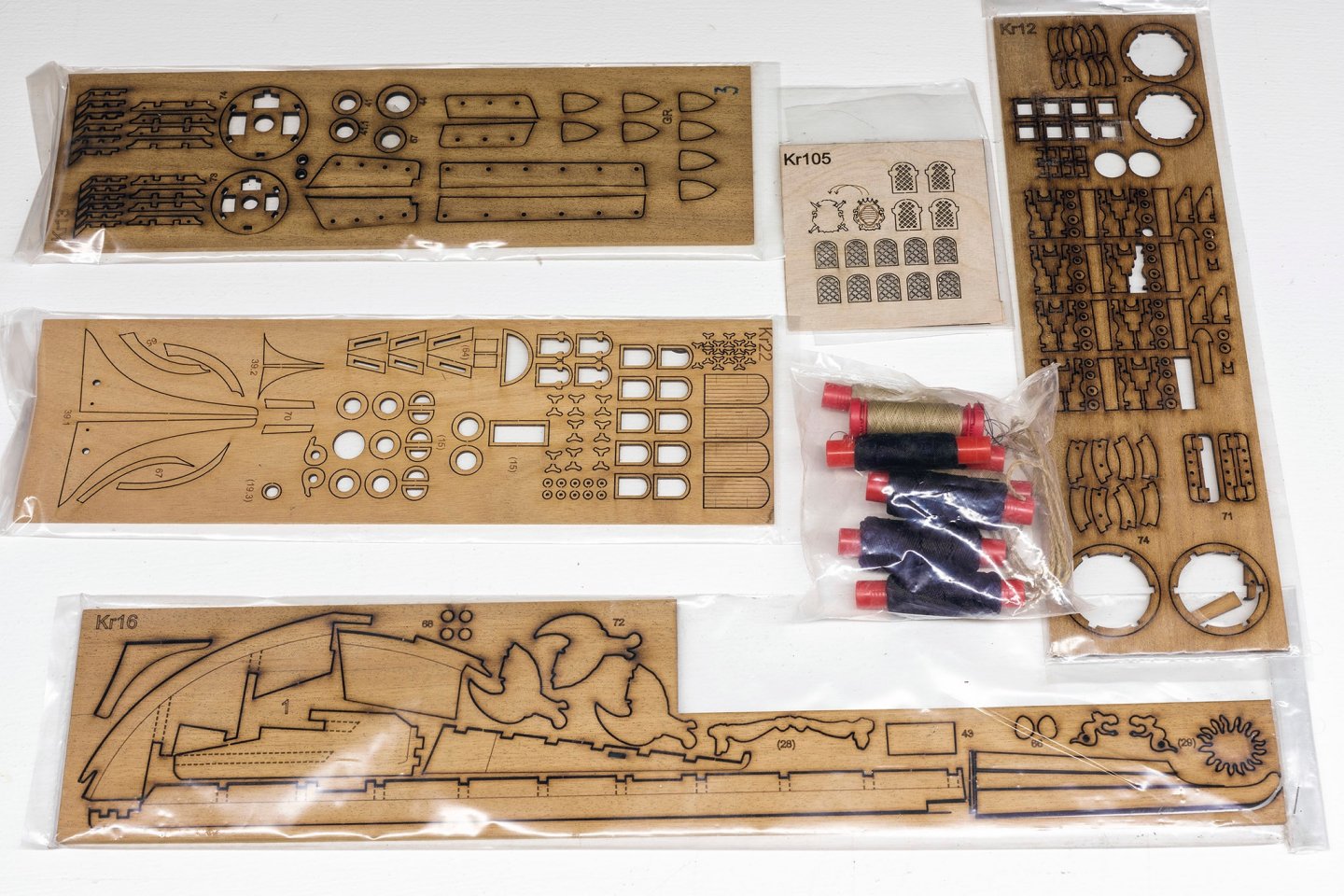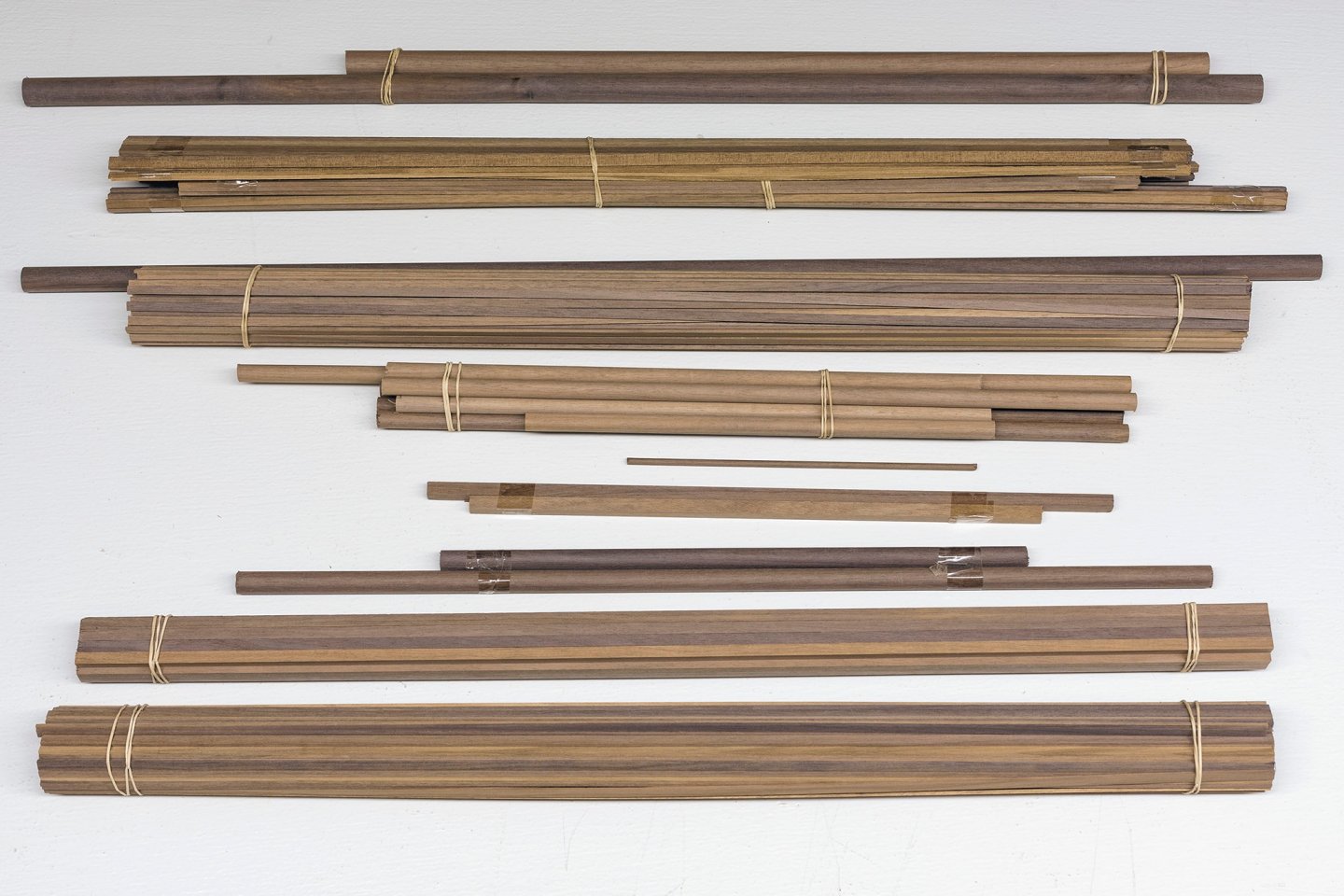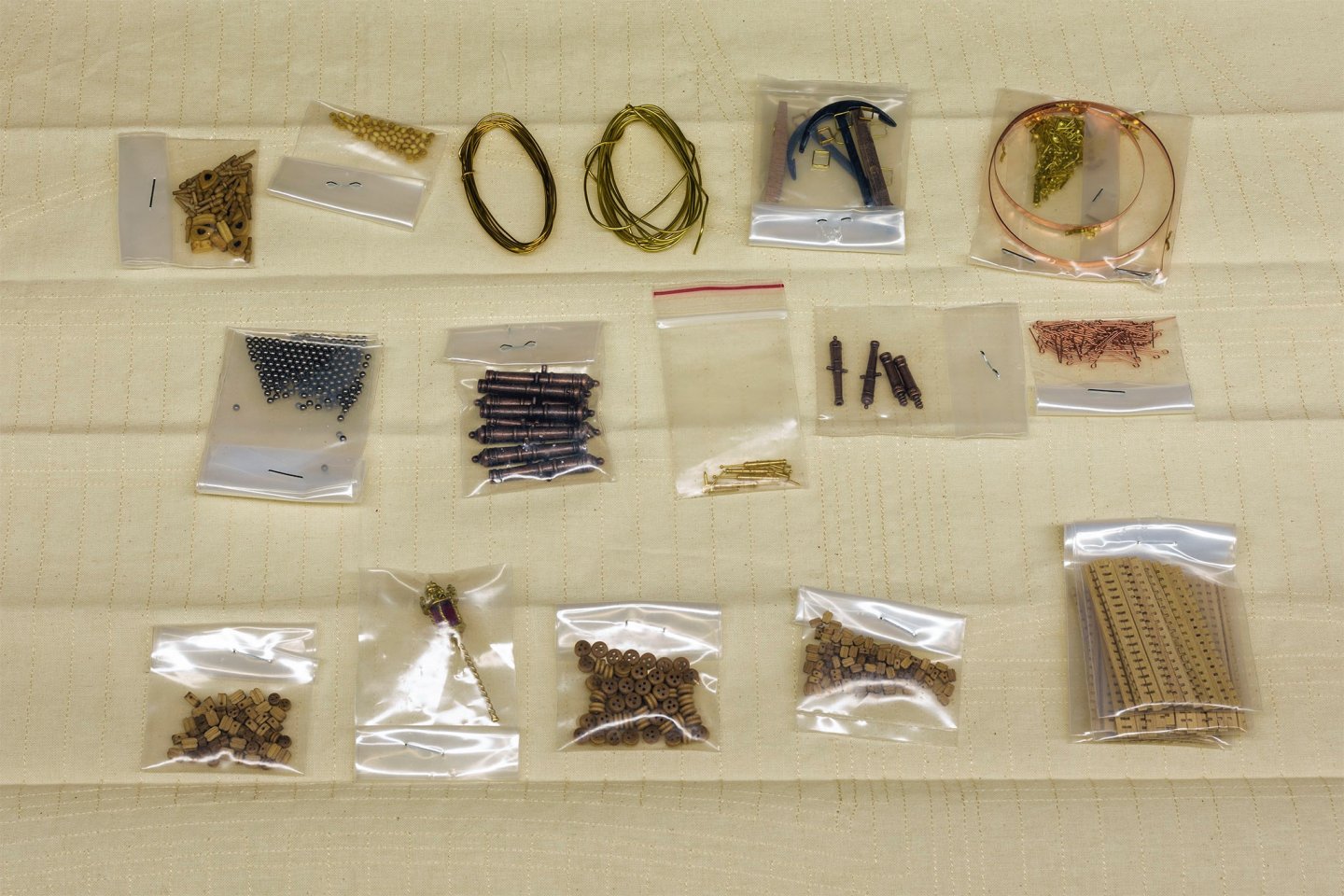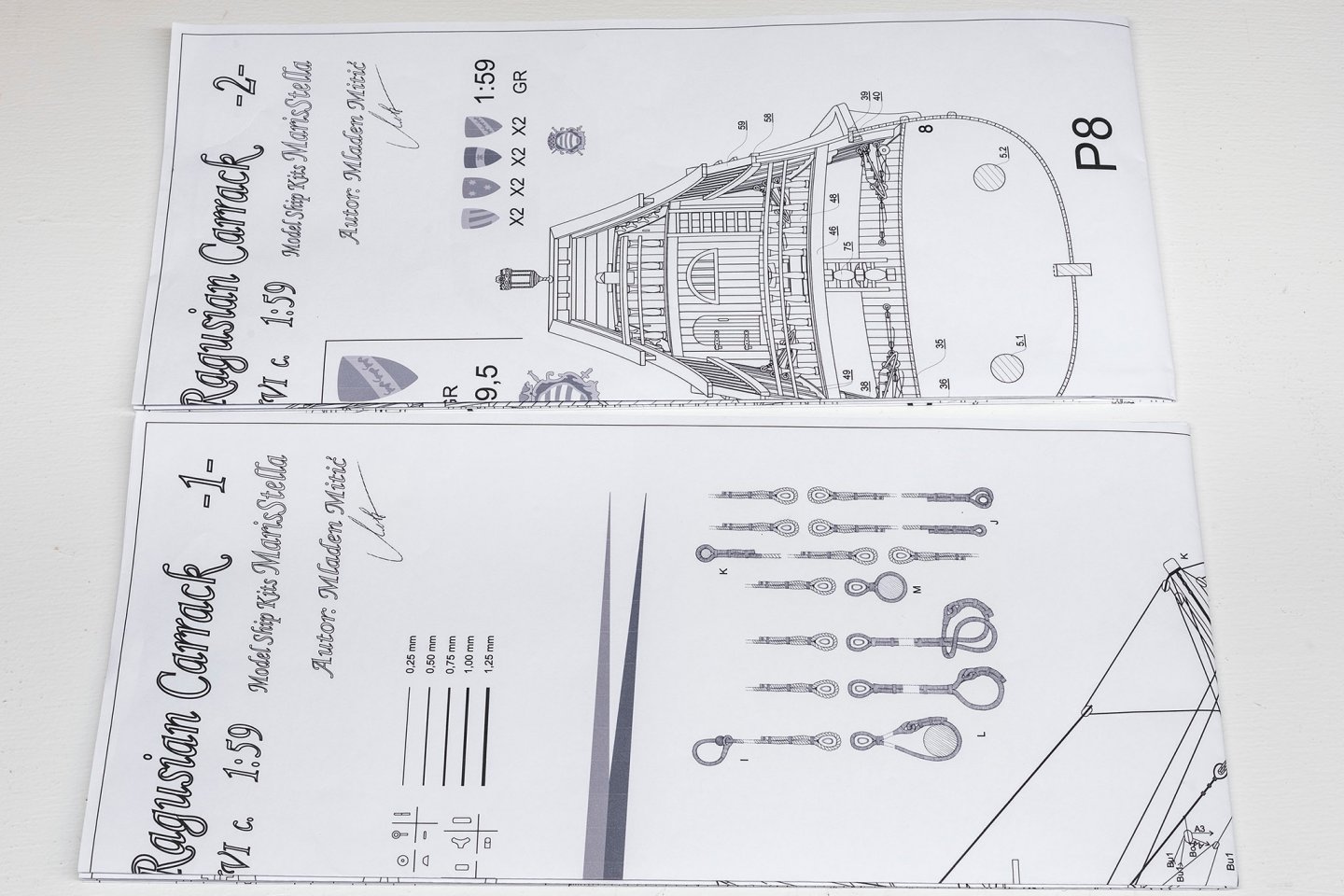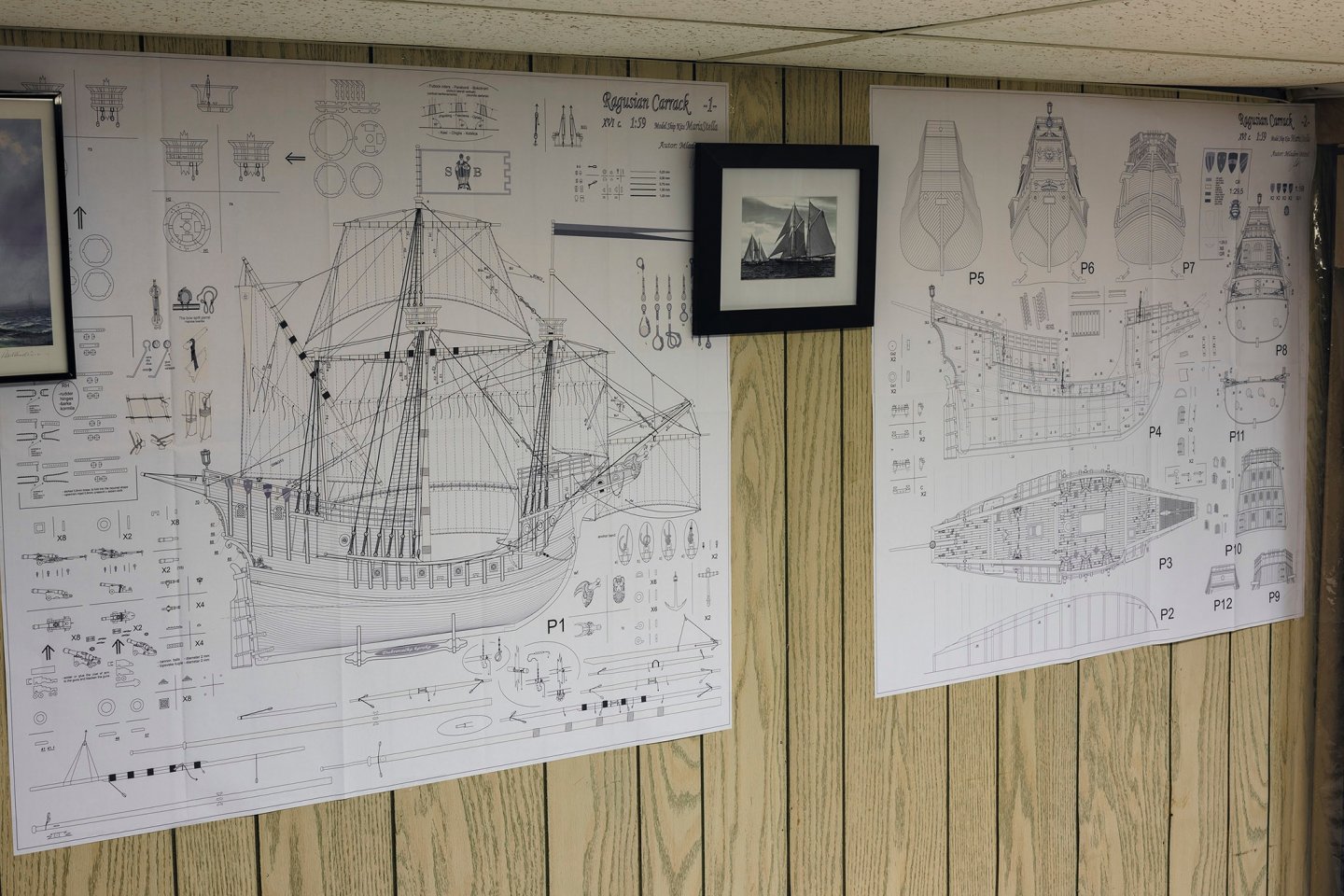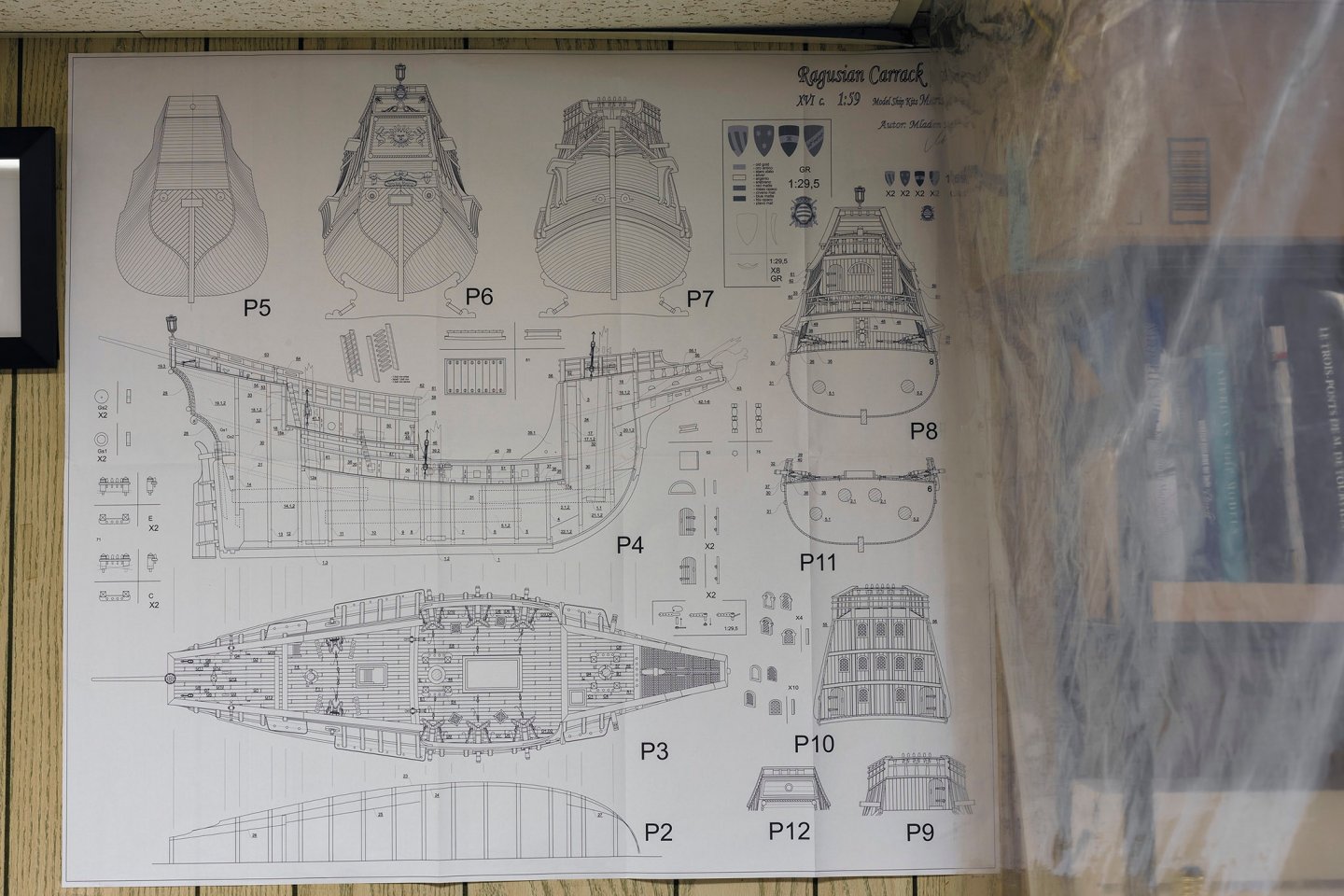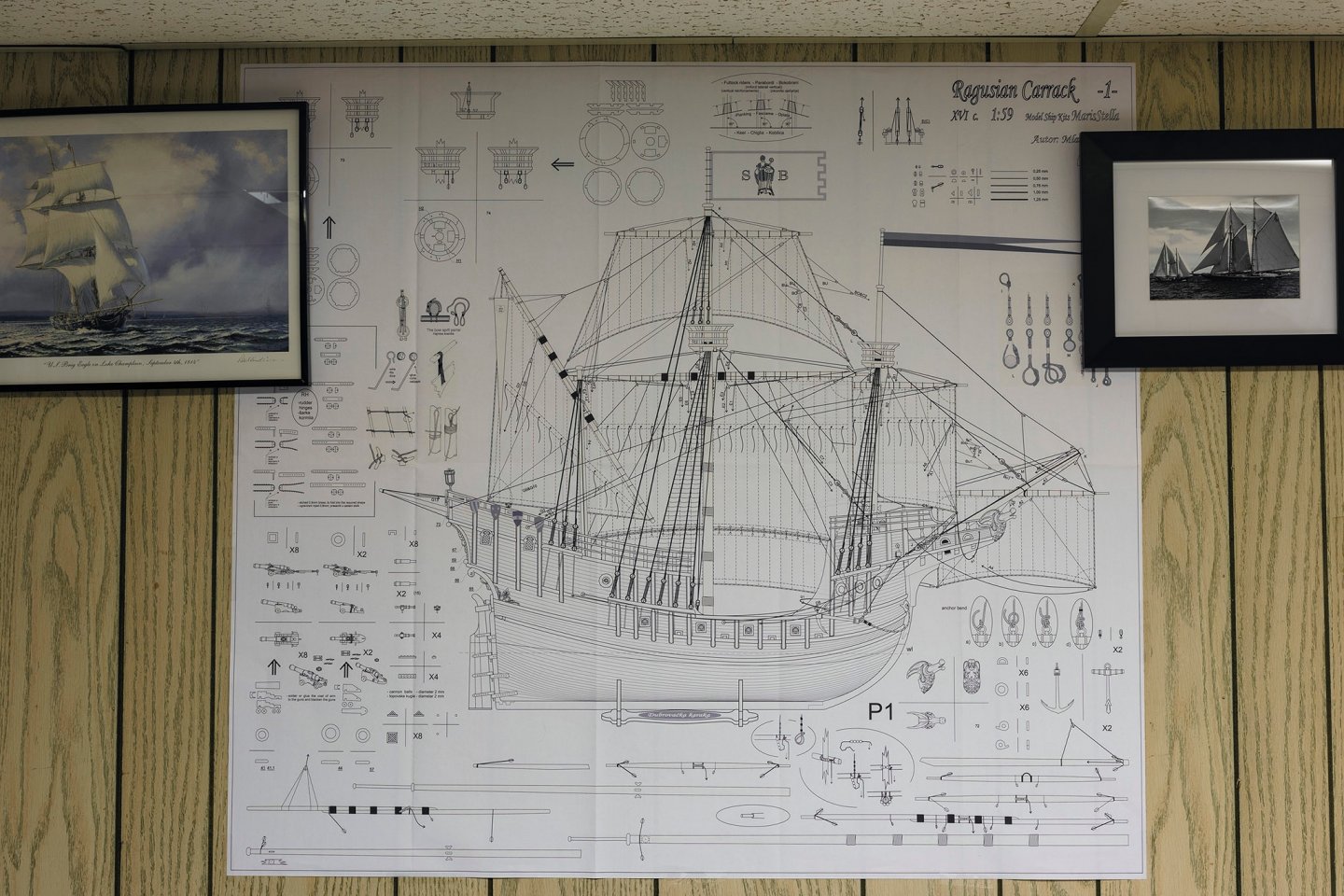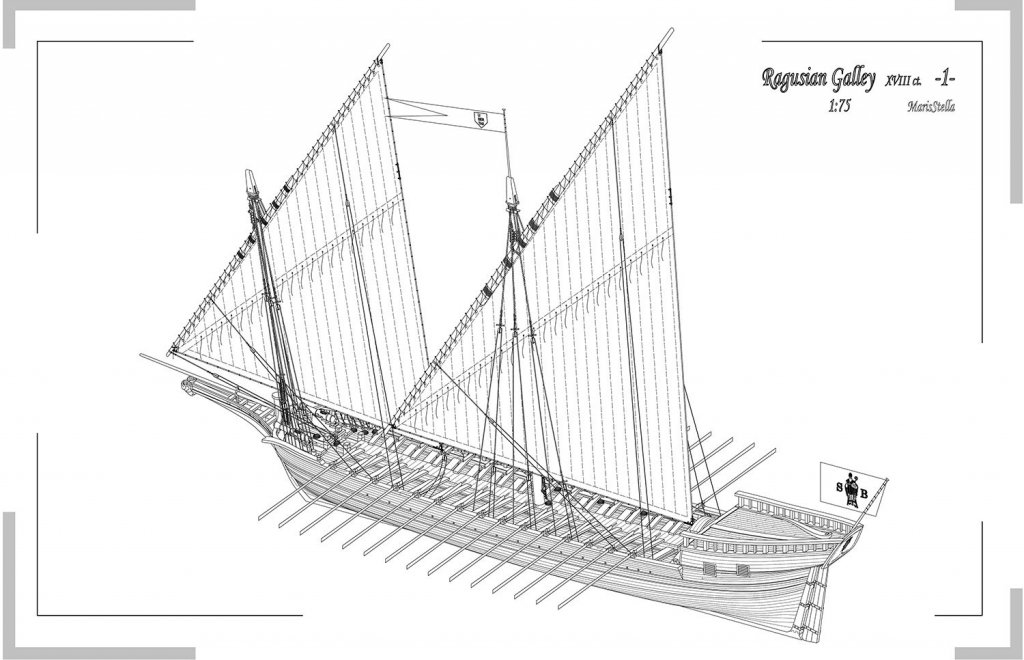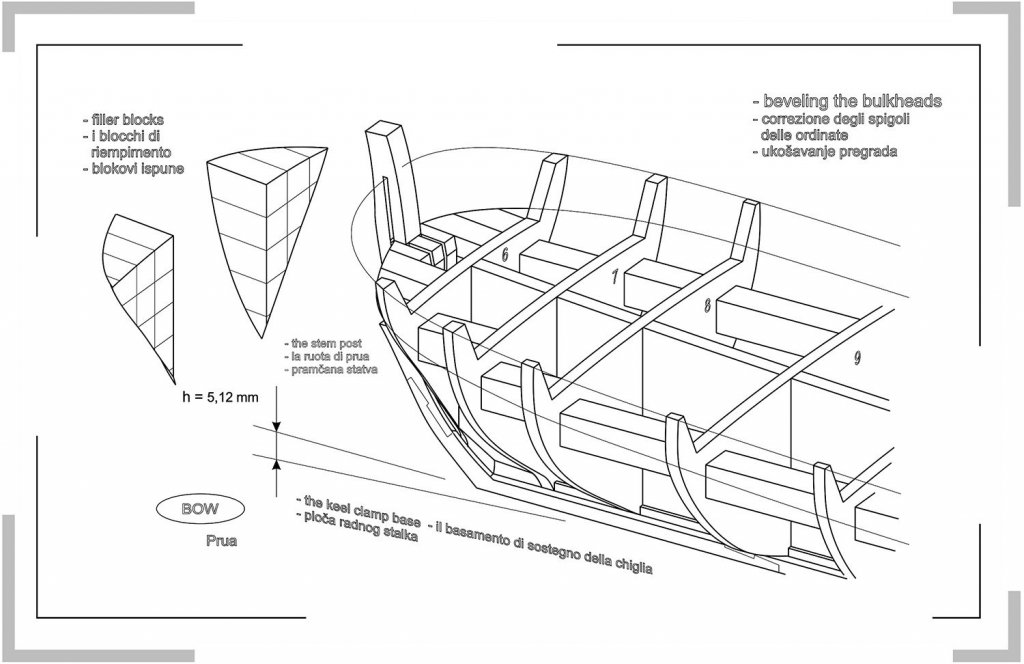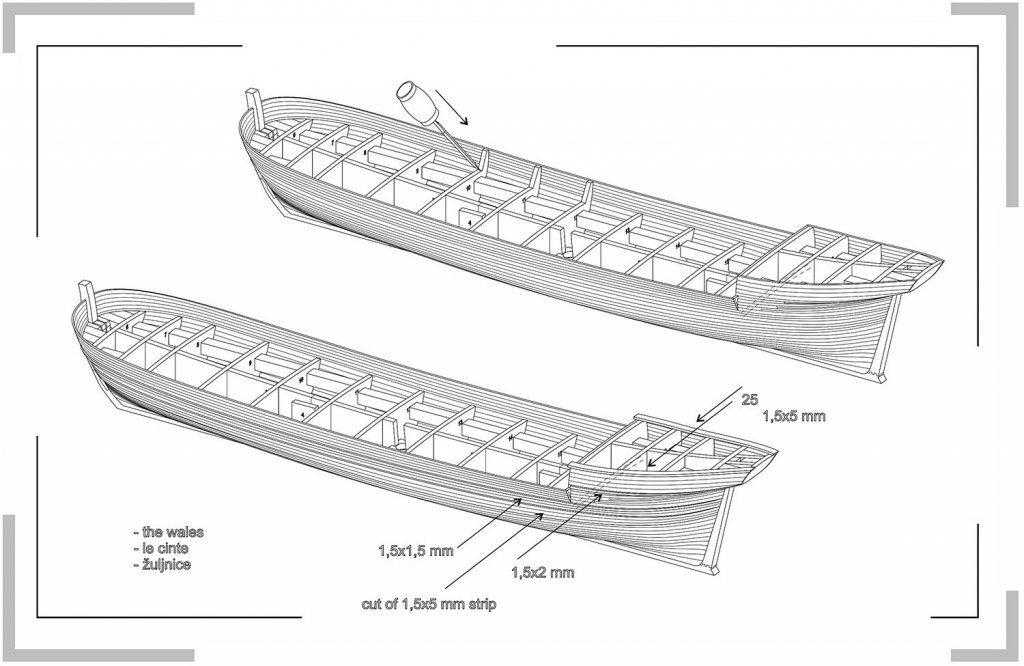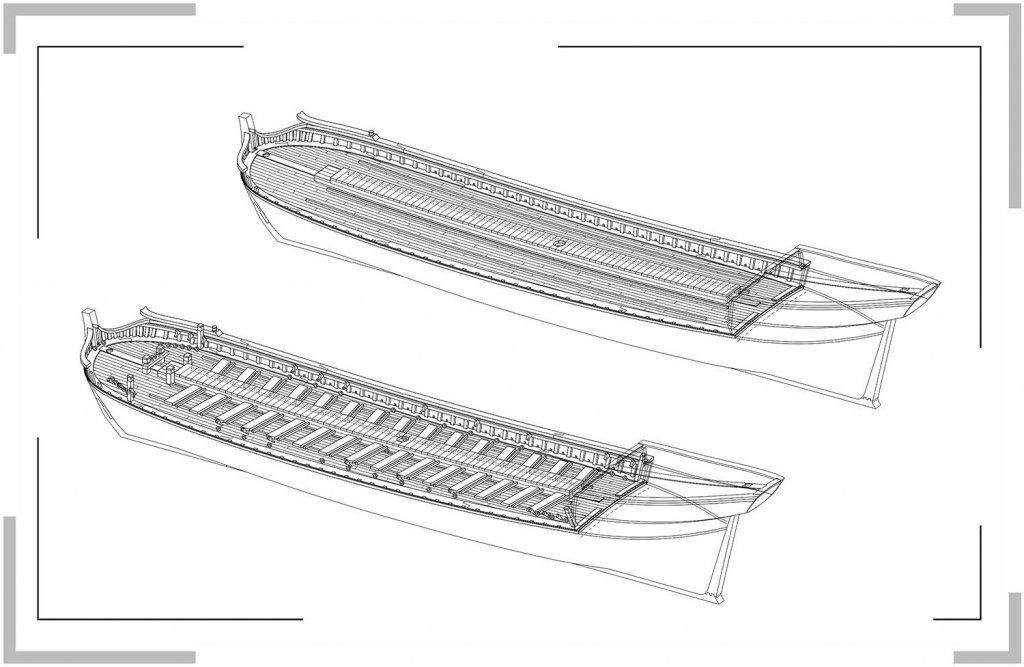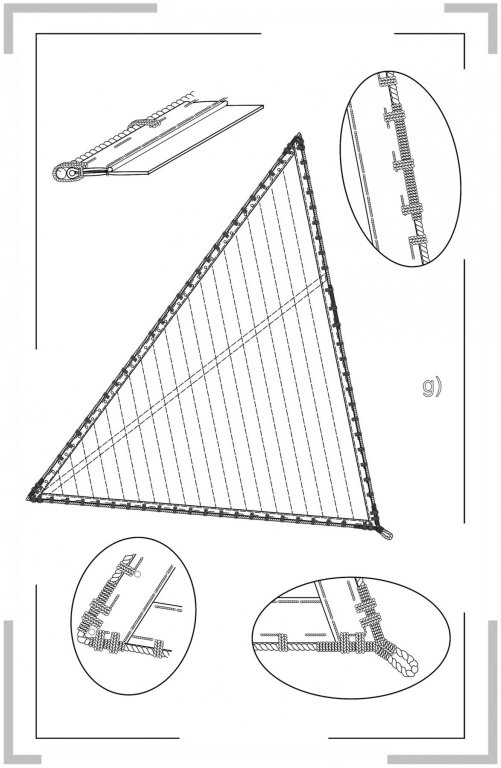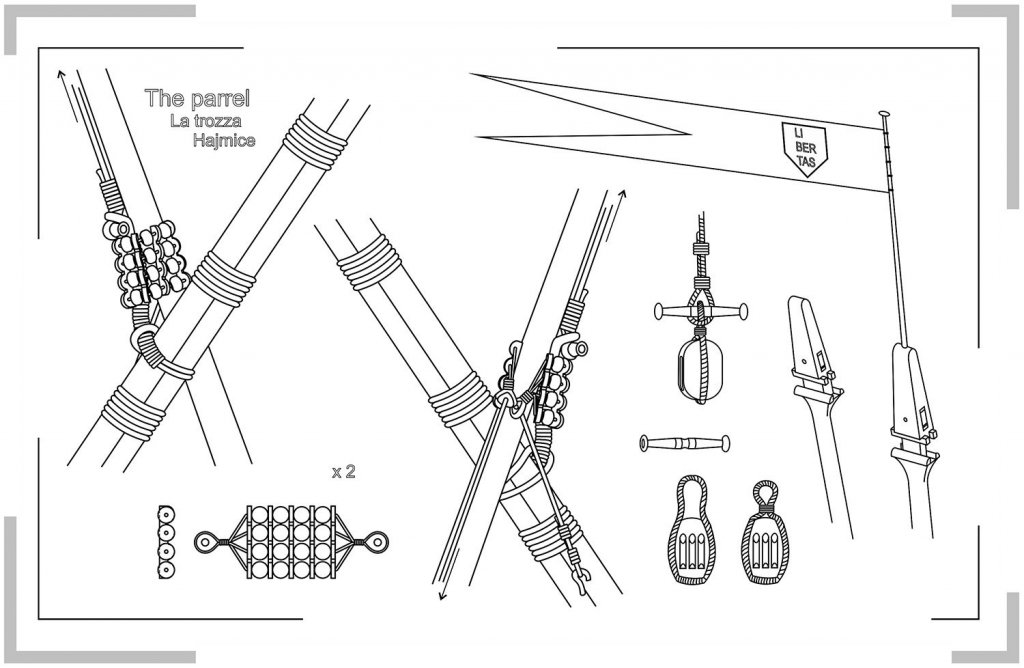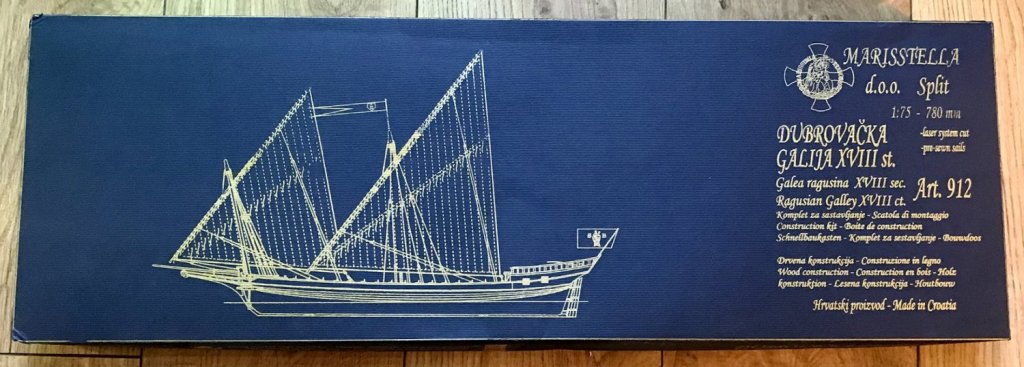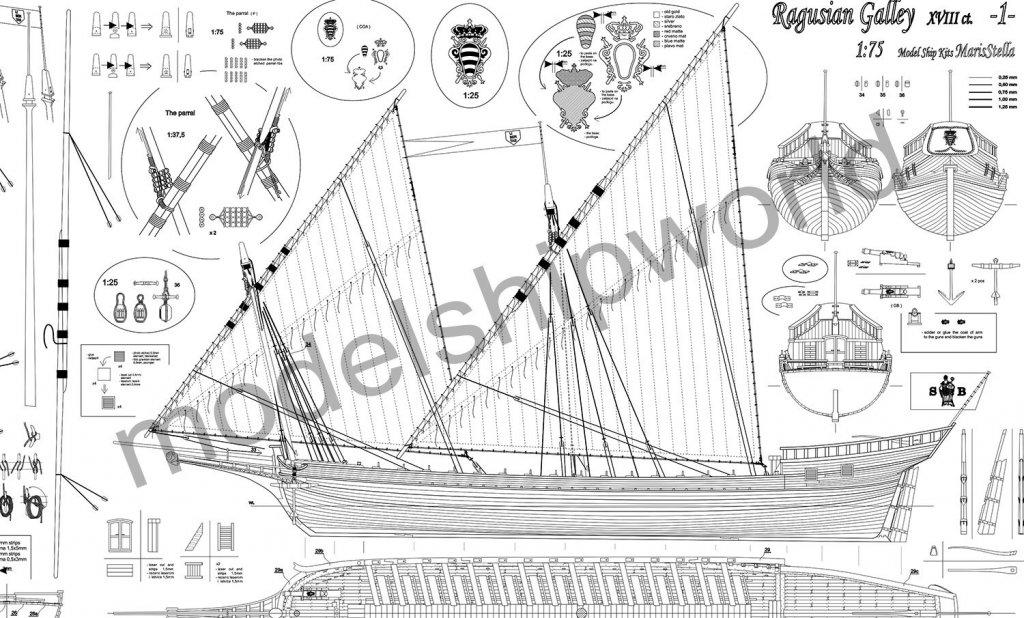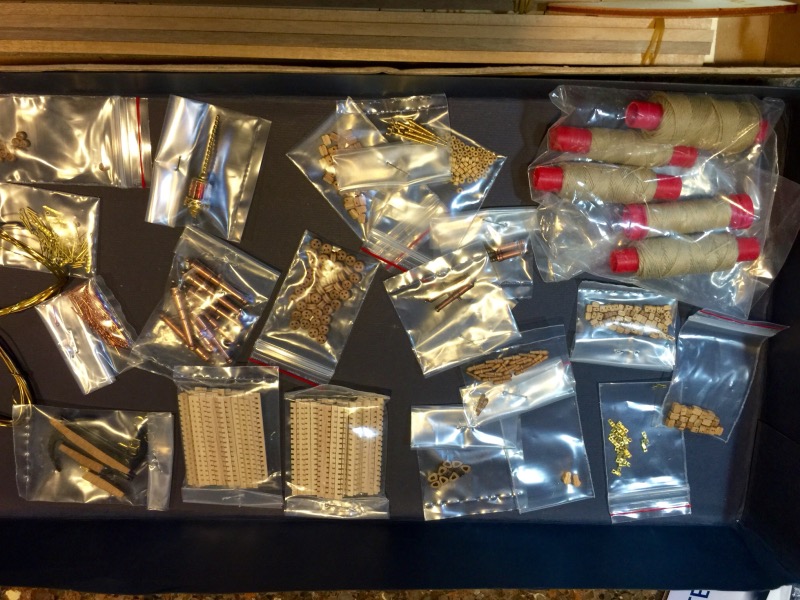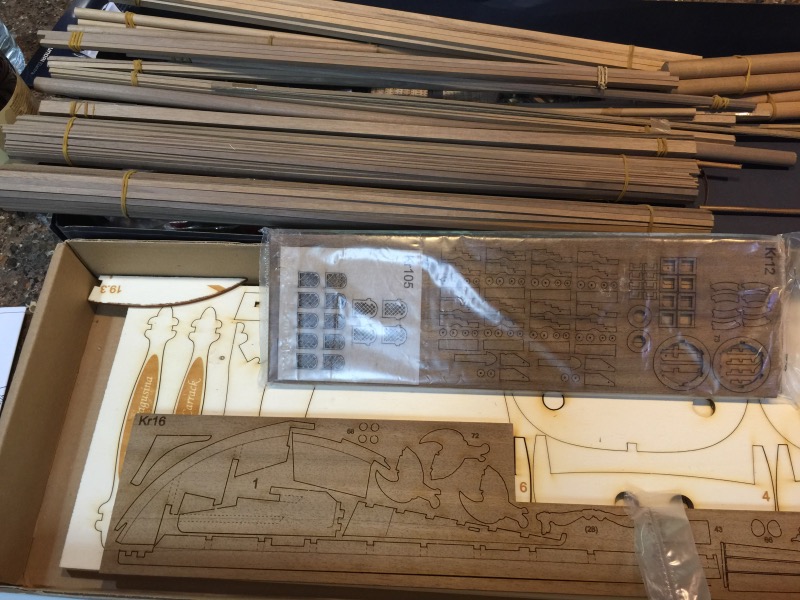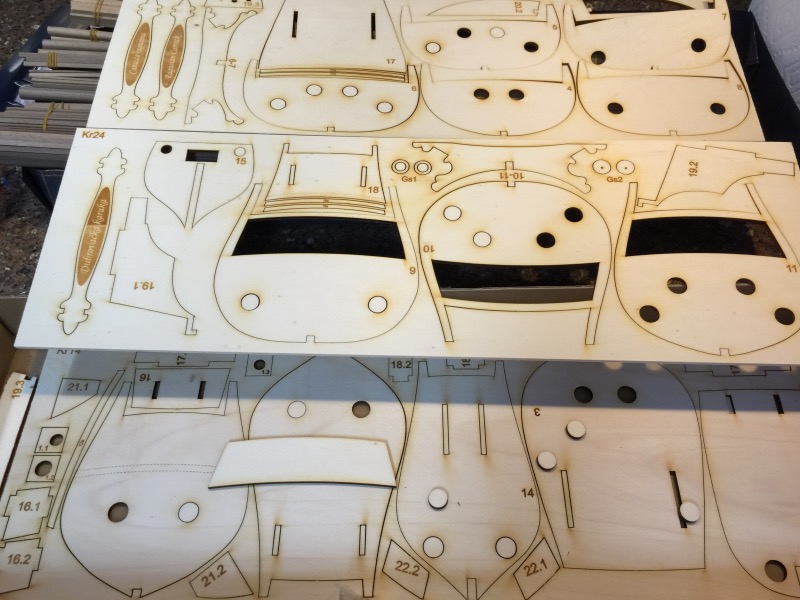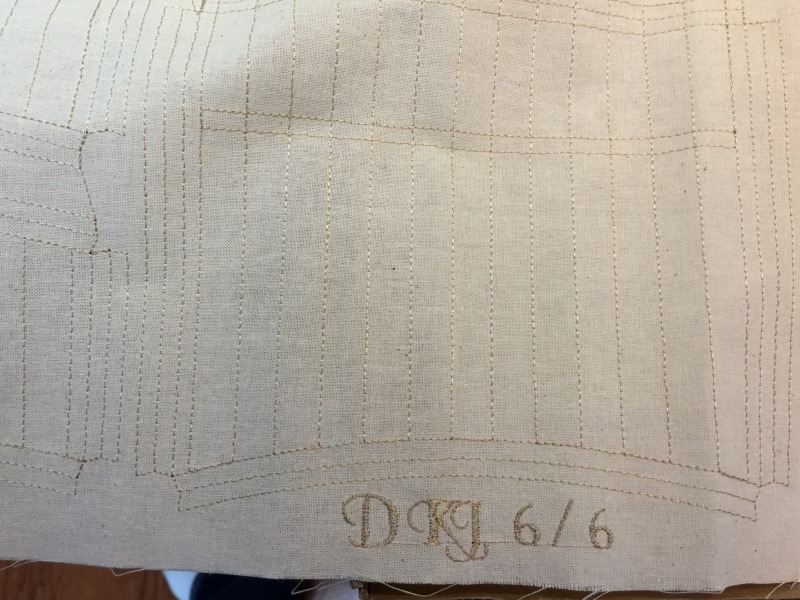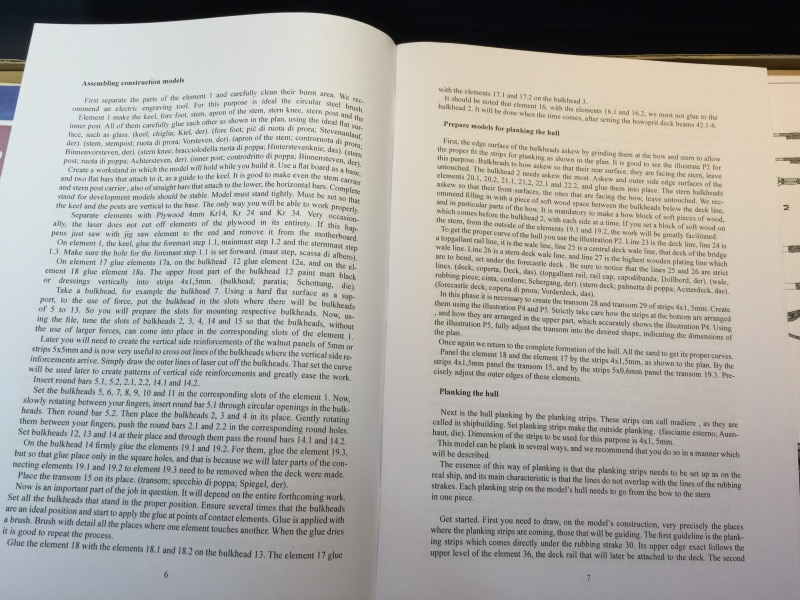Search the Community
Showing results for tags 'ragusian'.
-
 This kit was provided for my YouTube channel as sponsorship from one of the channel members who wished to remain anonymous. I was offered a choice between two fairly well-established manufacturers. My attention was drawn to the Carrack model, because this is my passion: ships from Columbus’ time ... OVERVIEW KIT: RAGUSIAN CARRACK Manufacturer: MarisStella (Croatia) Scale: 1:59 (775 mm/30,5") Single plank-on-bulkhead hull. All visible elements are made of solid walnut wood (laser cut). The bulkheads are of plywood. Detailed instructions with pictures and drawings. Fabric for the sails is ready-dyed and pre-stitched...
This kit was provided for my YouTube channel as sponsorship from one of the channel members who wished to remain anonymous. I was offered a choice between two fairly well-established manufacturers. My attention was drawn to the Carrack model, because this is my passion: ships from Columbus’ time ... OVERVIEW KIT: RAGUSIAN CARRACK Manufacturer: MarisStella (Croatia) Scale: 1:59 (775 mm/30,5") Single plank-on-bulkhead hull. All visible elements are made of solid walnut wood (laser cut). The bulkheads are of plywood. Detailed instructions with pictures and drawings. Fabric for the sails is ready-dyed and pre-stitched...- 156 replies
-
- marisstella
- marisstella model ship kits
- (and 4 more)
-
Thursday 19 October 2017 A warm welcome to all users of this forum. A few days ago, I received from Zoran Pavlovic, the kit manufacturer, the material I ordered for my next model, a project I want to manage in the period of time I will spend in Tuscany. The kit is produced by a Croatian company, MARISSTELLA of Split, founded in 2008. I found it on the Modelshipworld forum where Marisstella is present with a advertisement banner. The company has a remarkably interesting product catalog, with typical boats of the Adriatic Sea. He is the same producer of the kit of my latest model, finished a few months ago: Gajeta Falkusa. The first impression is that the materials supplied with the kit are definitely valid, the timbers are of good quality and the two sheets containing the plans are very well done. Many pieces are laser pre-cut both on plywood and solid wood. Concerning the wood used, the walnut is used for each element: planking, masts and spars, detail of the decks. As I wrote the wood is of high quality but personally I would have preferred a mix of wood with different colors to make the model less monotonous. I do not exclude that during this project I do not invent something using different woods to obtain a more lively and chromatic results. We'll see. Again the biggest flaw in this kit is the assembling instructions: they are written in Croatian and English language. No comment on the Croatian, I do not know it, but for English it could be better. But Zoran Pavlovic has available a new version of them : he has reviewed the part in English and has also added instructions in Italian language. Zoran sent me them via email a couple of days after I received the kit and I have to say that they are very, very well translated. Unlike the instructions of the Gajeta Falkusa, my last model, in this case there are virtually no images showing the various stages of construction and this is a small problem because this model is also quite complex and the written instructions become critical. They must be read carefully and understood perfectly to avoid mistakes that could have heavy consequences. And here's a further thank to Zoran for the magnificent Italian instructions: I hope will make the job easier and more methodical. At the moment I'm going to read, understand, interpret and comment them with some personal notes that should help me at the right time. Here I would like to propose some images of the kit and the material contained inside. First, a little bit of data: Scale 1:59 Total Length 775 mm Size of the packaging cm 65 x 21.5 Let's start by looking at our kit before opening it: 01 Ragusian Carrack/13.jpg But let's describe what model is. This model represents a Ragusian Carrack, a sailing ship of the maritime republics of the period from the 14th to the middle of the 17th century, designed for freight transport. The Carrack appears in Venice at the beginning of the 14th century, but at the same time it begins to be built in the city of Dubrovnik (Ragusa), another maritime republic, less famous of the four Italian towns but not less important, as the largest type of Adriatic shipping vessel. In the fifteenth century, the Carrack spread from the Adriatic to the Mediterranean Sea and in the late 15th century to the Atlantic Ocean. Here they were built by the Spaniards, Portuguese, French and Dutch . It is therefore a vessel almost contemporary to the famous caravels and naos from the Iberian peninsula but still before the galleon, characterized by the high fore and aft castles. In the sixteenth century the Dubrovnik Carrack was one of the largest ships in the world and sailed to England. The large and spacious Carrack was called Argosia, a name derived from ragusia, the adjective of Ragusa. The level of popularity of Dubrovnik's carracks is demonstrated by the fact that the English created the literal expression Argosy ship. But let's post some pictures of this gorgeous finished model, pictures sent by Zoran, which worth more than a thousand words. 02 Ragusian Carrack/Images/4CB_4522 DUBROVAČKA KARAKA 16. ST.jpg 03 Ragusian Carrack/Images/4CB_4527 DUBROVAČKA KARAKA 16. ST.jpg 04 Ragusian Carrack/Images/4CB_4532 DUBROVAČKA KARAKA 16. ST.jpg 05 Ragusian Carrack/Images/4CB_4537 DUBROVAČKA KARAKA 16. ST.jpg See you next time with additional images of the Ragusian Carrack !! Cheers, Jack.Aubrey.
- 190 replies
-
- ragusian
- marisstella
-
(and 1 more)
Tagged with:
-
Hey howya goin all, this is my first build log of a ship but not my first ship that I've built. Carrack probably took her name from Arabic word karraka, which means light boat (Carack, carraque, kraeck, Carraca). this is a big sailing ship in use from 14th to the 17th century, designed for transporting goods. Carrack appeared in Venice in the early 14th century, but almostat the same time began to be built in the city of Dubrovnik (Ragusa) as the largest cargo ships in the Adriatic. In the 15th century Carrack has spread from Adriatic, the Mediterranean Sea and at the end of the 15th century, the Atlantic Ocean. Then they were built by the Spanish, Portuguese, French abd Dutch. In the 16th century Durovnik's Carrrack were among the world's largest ships and sailed to England. the large and spacious Carrack is called argosies, mane that derives from ragusies, the adjective of Ragusa. How popular were the Carrack od Dubrovnik is the best proof that the English have created for them the literary expression the Argosy ship. Here's a look at whats in the kit. This is what the ship will look like when it is finished.
-
Click on the tags in the title above (shown in black) for an instant list of all the build logs for that kit subject.
-
- marisstella
- ontario
- (and 21 more)
-

kit review 1:72 Ragusian Galley 18thCentury - MarisStella
James H posted a topic in REVIEWS: Model kits
1:72 Ragusian Galley 18thCentury MarisStella Available from MarisStella for €147 plus shipping The Republic of Ragusa was a maritime republic centred on the city of Dubrovnik (Ragusa in Italian, German and Latin; Raguse in French) in Dalmatia (today in southernmost Croatia) that carried that name from 1358 until 1808. It reached its commercial peak in the 15th and the 16th centuries, before being conquered by Napoleon's French Empire and formally annexed by the Napoleonic Kingdom of Italy in 1808. It had a population of about 30,000 people, out of whom 5,000 lived within the city walls. Its Latin motto was "Non bene pro toto libertas venditur auro", which means "Liberty is not well sold for all the gold". The Dubrovnik galley was an integral part of Dubrovnik's war fleet, which in the seventeenth and eighteenth centuries, had only a few small warships (at most ten), operated solely because of frequent harassment and looting by pirates and cargo ships at that time. The Galleys were stationed in Dubrovnik and Mali Ston. Other Croatian coastal centres had this type of ship, along the eastern Adriatic coast: Kotor, Omis, Senj, and others. The Dubrovnik galley was driven by both wind and rowers (Galiot), who were both sailors and soldiers, as was appropriate, but there were also condemned criminals that rowed the State ships. Their main feature was their speed, and they were used for military, police and customs purposes, courier services, and for the transport of diplomats and senior civil servants. They were also used for the transportation of goods at the expense of the State. The kit MarisStella’s kit range is currently undergoing an upgrade, and most certainly in terms of their boxing. This one comes to me in its original incarnation, with a deep midnight blue thin card lid with all printing and imagery in gold ink. This does look quite stark but very attractive. I’m told that the new appearance will have finished model imagery on the box. MarisStella have said they will send over examples of the upgraded kits for us to look at on MSW, so we’ll get to see those changes first-hand in the next months. This release comes in a fairly weighty box, and lifting the lid off, we are first presented with a product leaflet, sheet of printed flags and a thick 122-page manual which is spiral-bound. All of these items sit on a cardboard tray which when lifted out, reveals the kit materials below. A large cardboard cover first needs to be lifted out to access the kit itself. Inside, several bundles of timber and dowel sit on top of two laser-cut sheets of plywood for the main bulkhead and keel construction, two sheets of laser-cut walnut, several fittings packets, another very thin sheet of laser-cut ply, one fret of photo-etch brass parts, pre-sewn sails, and a packet of rigging cord. Apart from the main sheets of ply and the timber bundles, all other elements within this kit are packed into clear sleeves that are either stapled closed or heat-sealed. My sample arrived with everything in good order. This POB model is designed very traditionally and is constructed around a 3-part false keel and a set of 15 bulkheads. The ply used for this is 4mm thick, and like all other parts on the main two constructional ply sheets, everything is very cleanly laser-cut, with an absolute minimum of scorching. One thing I noticed on all of the ply sheets is the laser-engraving and marking of where other components will fit to. I quite like this approach as it helps to ensure correct and precise construction throughout. That engraving has also been put to good use on the display stand elements that can be seen on these two sheets. These are also supplied in English, Italian and Croatian text, and contain a little engraved scroll work. You may opt for something a little glitzier with your build, but then again you may be perfectly happy with the parts that MarisStella provide here. In between the various bulkheads, some 8mm² lengths of lime have been included that can be cut to length and wedged in to keep everything straight. I believe some of the other kits have lengths of dowel which slot continuously through the bulkheads. I would’ve liked to have seen similar here, but at least the timber is included. It is also suggested that this material be cut up and used to create the bow and stern filler blocks, although you might like to use balsa for this purpose. Two sheets of walnut are supplied, one of which (the narrower and thicker sheet) contains the keel components. Although you will need to cut the rabbet into these, the positions for this are engraved onto the parts and the manual clearly shows how this is done. The other walnut sheet is lighter in colour and thinner than the previous, containing parts for the gun carriages, rail cap strips, cabin bulkhead, and transom, channels etc. Again, and where appropriate, more engraving is present for constructional accuracy. All walnut sheet timber is of high quality with good grain that shouldn’t split etc. A very thin sheet of birch ply is included for the head rails, transom and cabin door detail etc. All strip stock in this kit is also of the same standard, with numerous bundles of timbers of different sizes and types, including European Walnut for the hull planking. There is some natural variation in the colour of the walnut planks, so I would look at possibly grouping them, so wood of the same tone is used the same for both sides. This model also has a single-planked hull, unlike the double-planked that we so commonly see these days. However, the deck is double-planked, and the planks sit directly atop of the bulkheads, with no thin ply deck to lay first. The second layer of deck planking is supplied as beech strips. Various lengths and diameters of dowel are included, and all supplied in walnut. These are tightly grained and have excellent natural colour. This is one model that really would benefit from having sails fitted, just to highlight the elegance of the shape. A feature of MarisStella kits is that the sail material is pre-sewn. By this, I mean that the shapes are lightly printed to a piece of pre-aged sheet and the inner stitched lines are present. All you need to do is to cut out the sails and sew the outer edges. Sail colour is akin to natural linen and looks good to use without any further ageing trickery. Two anchor packs are included. These contain a metal anchor that is painted black, a separate walnut stock, and some brass bandings that would look nice if they were also blackened. Another pack contains 3-eye rigging blocks, single blocks, eyelets, belaying pins, and parrel beads. There is some colour variation in the block colour and all look to be made from walnut. One length of 1mm brass wire is included in one fittings pack, as are two 4mm cannon for the bow. These are finished with an antique patina and may benefit from being blackened in some way. I would use Gunze Dark Iron paint which is then burnished to an iron finish. A reasonably thick sheet of photo-etch parts is also included, containing head rail decoration, transom decoration, rudder straps etc. Quality is again excellent, with reasonably thin tags to remove the parts from their positions. Tag positions are the only clean-up that will be required with these parts. A single packet is included that contains four spools of natural finish rigging cord in 0.25, 0.5, 0.75 and 1mm diameters. One length of 1.25mm is included separately, as is a 1mm length of black rope. Every vessel of course needs a flag and both this and a pennant are supplied here, laser-printed in colour onto paper. You’ll need to furl these realistically and they could’ve done with been thinner, possibly from tissue paper, but will still look very attractive when flown. Instructions This 121-page spiral-bound A4 manual also has a clear plastic cover to protect it. Each of the constructional stages are illustrated by generally uncluttered CAD line drawings that are annotated in English, Italian and Croatian. Some drawing details are a little small, such as the eyelet positions, footplates etc. so maybe magnify those a little. A very comprehensive section on making the sails is also included. Illustrated construction takes place over 83 pages, and this is then followed by the building instruction text and list of parts. Plan A large single sheet plan is included that contains pretty much every dimension/measurement you'll need and the line drawing quality is excellent. To prevent any piracy, I have only included a portion of that plan here, with no bulkhead shapes. Conclusion A very nice kit of a very unusual subject. I’ve seen so many model ships of antiquity, but this is one that seems to bridge the gap by being of a generally ancient style, whilst being an 18thCentury vessel. MarisStella’s design is nice and easy to follow and is coupled with high quality materials and drawings. In all, an excellent package that will provide many hours of pleasure for a very reasonable price. As this is single-planked, I would recommend this to intermediate modellers. My sincere thanks to MarisStella for sending this kit out for review on Model Ship World. To purchase directly, click the link at the top of the page, or head over to your local MarisStella stockist. -
It has been a few years since I have started a build log or worked on a model ship. There are many things I will need to re-learn. I noticed the ad banner for Marisstella Models on Model Ships World's home page and found this model of a Ragusian Carrack. I emailed the company, and Zoran Pavlocic' replied. The process went smoothly. I ordered and paid by PayPal, and 12 days later the mailman dropped off the package. The model box was packaged inside a sturdy cardboard box. All the material is top quality. I'm very impressed. The sails have already been stitched. Directions are in English . The building will start tonight, and I will have pictures tomorrow. It looks like I need to learn how to take pictures with my iPhone.
About us
Modelshipworld - Advancing Ship Modeling through Research
SSL Secured
Your security is important for us so this Website is SSL-Secured
NRG Mailing Address
Nautical Research Guild
237 South Lincoln Street
Westmont IL, 60559-1917
Model Ship World ® and the MSW logo are Registered Trademarks, and belong to the Nautical Research Guild (United States Patent and Trademark Office: No. 6,929,264 & No. 6,929,274, registered Dec. 20, 2022)
Helpful Links
About the NRG
If you enjoy building ship models that are historically accurate as well as beautiful, then The Nautical Research Guild (NRG) is just right for you.
The Guild is a non-profit educational organization whose mission is to “Advance Ship Modeling Through Research”. We provide support to our members in their efforts to raise the quality of their model ships.
The Nautical Research Guild has published our world-renowned quarterly magazine, The Nautical Research Journal, since 1955. The pages of the Journal are full of articles by accomplished ship modelers who show you how they create those exquisite details on their models, and by maritime historians who show you the correct details to build. The Journal is available in both print and digital editions. Go to the NRG web site (www.thenrg.org) to download a complimentary digital copy of the Journal. The NRG also publishes plan sets, books and compilations of back issues of the Journal and the former Ships in Scale and Model Ship Builder magazines.

